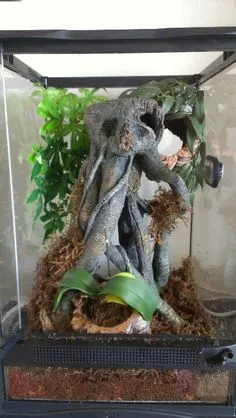Best Tarantula Enclosure Top 5 Picks
Choosing the best tarantula enclosure is crucial for the health, happiness, and overall well-being of your eight-legged companion. A properly designed enclosure provides a safe, comfortable, and stimulating environment, allowing your tarantula to thrive. This guide explores the top 5 picks for the best tarantula enclosures, considering factors such as size, ventilation, and ease of maintenance. Before diving into the reviews, understanding the essential aspects of a tarantula enclosure is important. This ensures you make an informed decision and provide your tarantula with the ideal habitat. Finding the perfect enclosure for your tarantula will make a huge difference in its health.
What to Consider When Choosing an Enclosure
Selecting the right enclosure involves careful consideration of several factors. The size, ventilation, and substrate all play a vital role in creating a suitable environment for your tarantula. Ignoring these aspects can lead to issues such as poor molting, stress, and even health problems for your pet. You should research your tarantula species, as each species has unique requirements, from arboreal species to terrestrial species, understanding the differences is essential for building a perfect enclosure. Prioritize safety by choosing an enclosure with a secure lid to prevent escapes, as tarantulas are skilled escape artists, always make sure the enclosure is properly secured.
Size Requirements for Different Tarantula Species
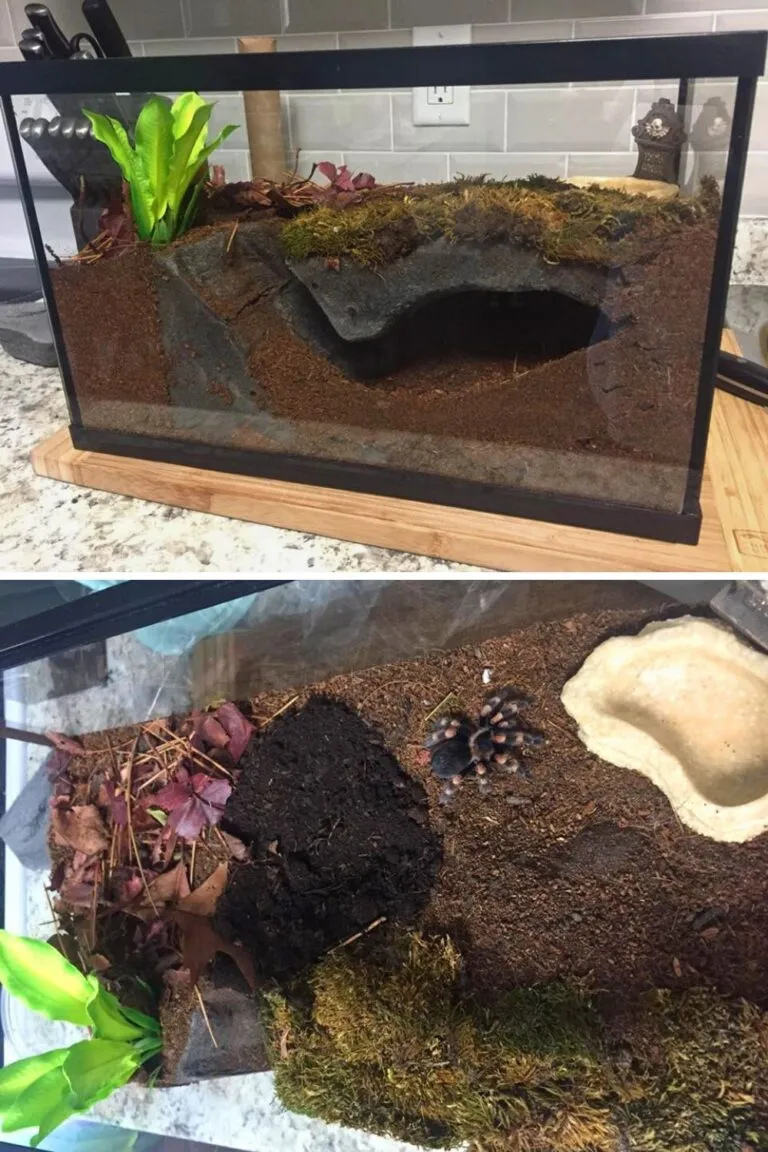
The size of the enclosure is a fundamental aspect of a comfortable habitat. An enclosure that is too small can restrict movement and lead to stress, while one that is excessively large can make it difficult for your tarantula to find food and feel secure. For terrestrial species, the enclosure should be at least twice the tarantula’s leg span in width and length, and the height should be sufficient for substrate depth. Arboreal species, on the other hand, require taller enclosures, with height being more important than floor space. Always consider the adult size of your tarantula when selecting an enclosure, as they can grow surprisingly large, depending on the species, of course. It is also better to have a bigger enclosure for your tarantula as they can grow and it is easier to handle.
Ventilation Needs
Proper ventilation is essential to prevent the buildup of excessive humidity and the growth of harmful molds. Tarantulas thrive in environments with good airflow, but this needs to be balanced with maintaining the appropriate humidity levels for their species. Look for enclosures with ventilation holes on the sides or top, avoiding designs that trap stagnant air. The ventilation should be sufficient to prevent condensation from forming excessively on the enclosure walls, as this can be an indicator of too much humidity. When setting up your enclosure, consider the placement of the ventilation in relation to the substrate and any water sources you provide. Improperly managed ventilation will lead to molds and bacterias.
Substrate Considerations
The substrate you choose serves as the foundation of your tarantula’s habitat, providing a place to burrow, hide, and maintain humidity. The ideal substrate should be absorbent, retain moisture, and be non-toxic. Popular choices include coconut fiber, peat moss, and a mix of these with other materials like vermiculite. The depth of the substrate should be appropriate for the species, with terrestrial tarantulas requiring a deeper layer for burrowing. When selecting substrate, consider the ease of cleaning and the potential for mold growth, as these factors affect how healthy your tarantula will be. Always avoid using substrates that contain harmful chemicals or are prone to decomposition, and make sure that you maintain the substrate properly to ensure your tarantula’s habitat is clean.
Top 5 Tarantula Enclosure Picks
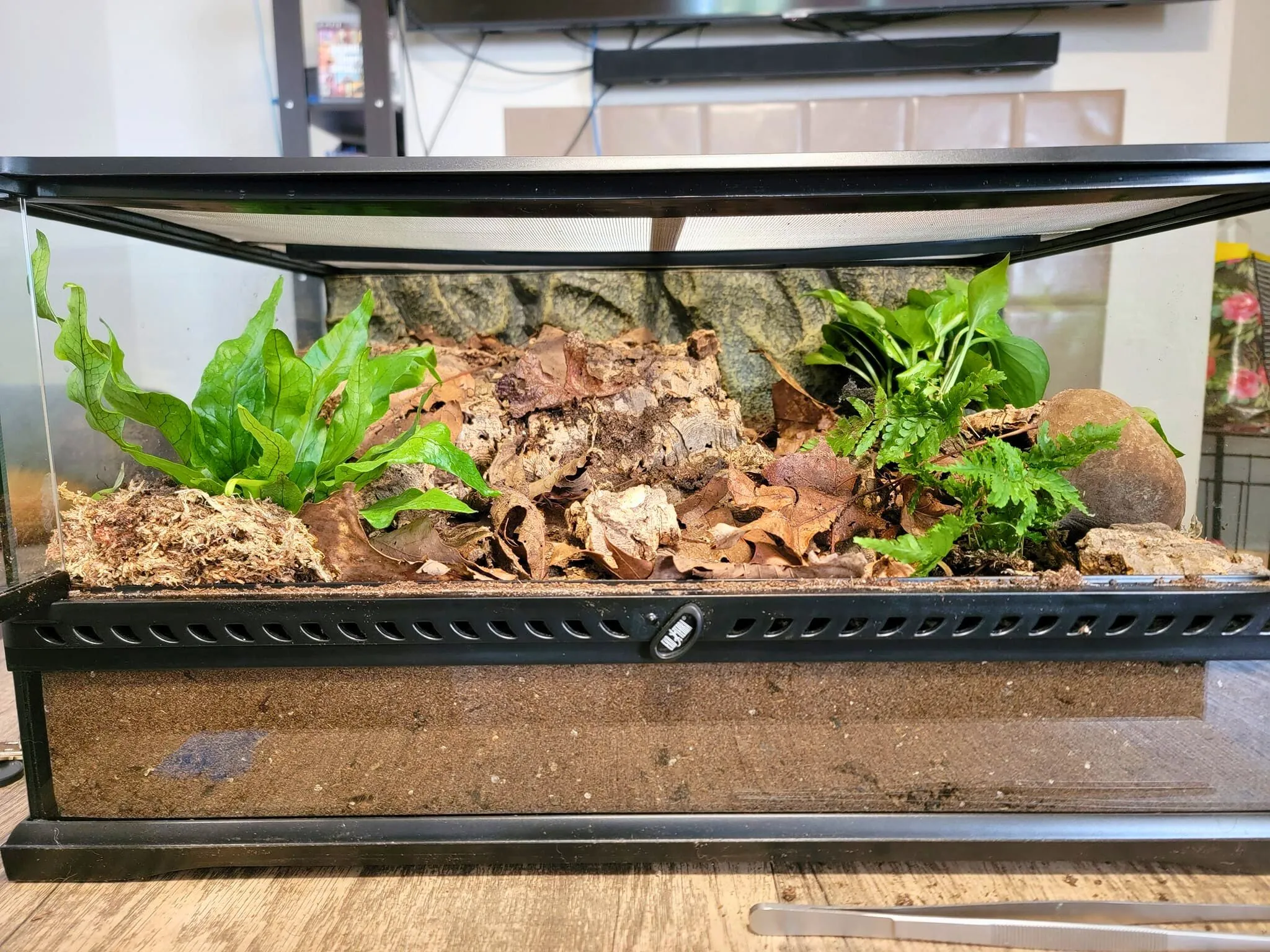
Here are our top 5 picks for the best tarantula enclosures, each selected for its unique features and suitability for different species and needs. These enclosures are known for their durability, ease of maintenance, and ability to provide a safe and comfortable habitat for your tarantula. Each pick is evaluated based on the critical factors discussed earlier – size, ventilation, substrate suitability, and overall design. Consider your tarantula’s species and specific requirements when making your final decision.
Enclosure Pick 1 Detailed Review
This enclosure is a great choice for beginner tarantula keepers, designed with ease of use and safety in mind. Featuring a secure lid with a locking mechanism to prevent escapes, it ensures peace of mind. The transparent construction offers excellent visibility of your pet, allowing you to observe your tarantula’s behavior and habitat. The ventilation is strategically placed to maintain optimal airflow while regulating humidity, making it suitable for a variety of tarantula species. The simple design of this enclosure makes it easy to clean and maintain, requiring minimal effort to provide your tarantula with a clean and comfortable home. The simplicity and cost effectiveness makes this enclosure an outstanding option.
Pros and Cons
Pros: The enclosure is lightweight and durable, easy to clean and set up. The transparent design provides excellent visibility of the tarantula. Cons: Ventilation could be improved for very humid environments. The size might be too small for larger tarantula species.
Best For
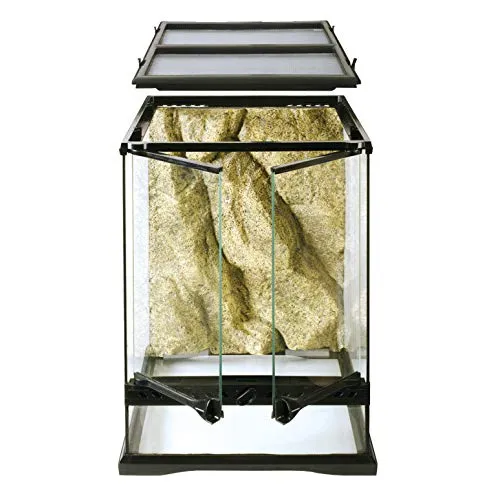
This enclosure is ideal for beginners and for smaller, terrestrial tarantula species. It is also great for those who want an easy-to-maintain and affordable option.
Enclosure Pick 2 Detailed Review
This enclosure offers a stylish and functional habitat for your tarantula. It is constructed from high-quality materials, with a focus on aesthetics and functionality. The enclosure features a unique design that integrates ventilation and easy access for feeding and maintenance. The enclosure is designed for arboreal species. The design ensures adequate airflow while providing a secure and visually appealing habitat for your tarantula. The built-in features are well thought out and designed to make your life easier when caring for your tarantula. The build quality and modern design will leave you amazed.
Pros and Cons
Pros: The enclosure is beautiful, and has great visibility. Cons: The price might be a bit more expensive than other enclosures.
Best For
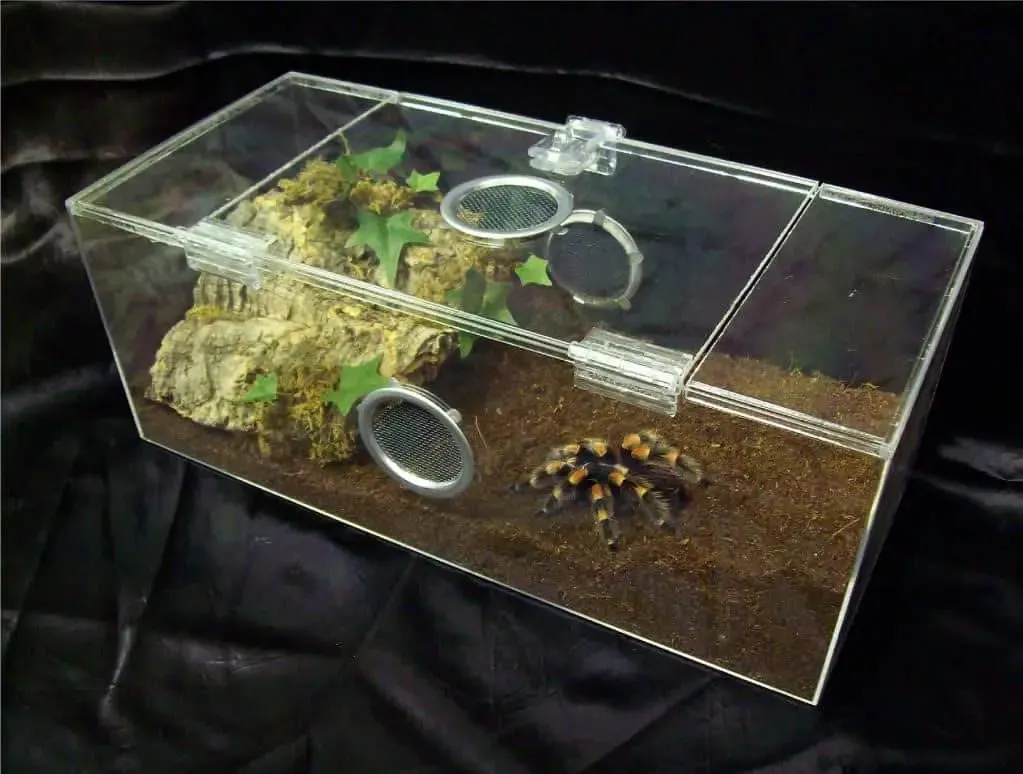
This enclosure is best suited for arboreal tarantulas and those who want a stylish and secure habitat.
Enclosure Pick 3 Detailed Review
This enclosure is a modular design, which allows customization and expansion, adapting to your tarantula’s changing needs. The enclosure is made of clear, durable materials, with excellent ventilation and easy access points for feeding and cleaning. This modular approach allows you to add or rearrange features within the enclosure as your tarantula grows or its needs change. The enclosure is built to be both durable and user-friendly, making it a top choice for tarantula enthusiasts. The enclosure is also easy to expand, allowing you to save money while you slowly purchase the parts required.
Pros and Cons
Pros: The enclosure allows for excellent customization and is easily expanded. Cons: Initial setup may require more time.
Best For
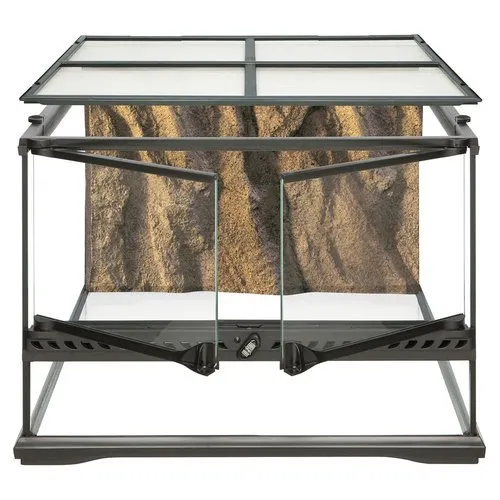
This enclosure is perfect for tarantula enthusiasts and those who want a customizable habitat.
Enclosure Pick 4 Detailed Review
This enclosure is specifically designed to maintain high humidity levels. It’s ideal for species that thrive in humid environments. The enclosure features tight-sealing doors and well-placed ventilation, preventing excessive moisture loss. The construction materials help to retain moisture, while also being easy to clean and maintain. This makes it ideal for species such as the Antilles Pinktoe. The enclosure design helps to create the perfect humid environment, and maintain it for longer periods of time.
Pros and Cons
Pros: The enclosure is built to maintain the perfect humidity levels, while the design allows for easy cleaning. Cons: The enclosure is more suited for humid environments.
Best For
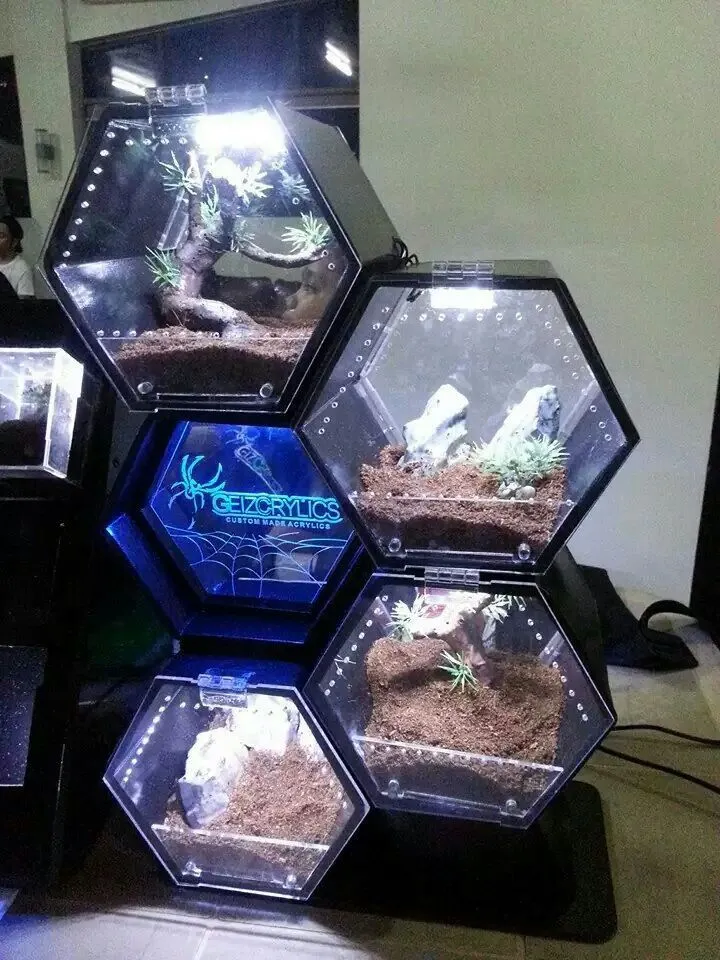
This enclosure is perfect for tarantulas that require high humidity.
Enclosure Pick 5 Detailed Review
This enclosure is an innovative and versatile choice for tarantula keepers, designed with a focus on both functionality and aesthetics. This enclosure incorporates several key features, including a built-in feeding platform and strategically placed ventilation. This is ideal for providing a complete habitat for your tarantula. Its transparent design ensures excellent visibility, allowing you to observe your tarantula’s behavior and enjoy a clear view of its habitat. The build quality of the enclosure is durable and designed to be both functional and aesthetically pleasing. The enclosure provides an excellent environment for a wide variety of tarantula species, making it a popular choice among experienced keepers.
Pros and Cons
Pros: This enclosure has a great design, it is easy to handle. Cons: The price point could be slightly higher than other enclosures.
Best For
This enclosure is best for tarantula enthusiasts who want a versatile and aesthetically pleasing habitat for their tarantulas.
Additional Enclosure Features
Beyond the basic design and functionality, there are several additional features that can enhance your tarantula’s enclosure. Heating and lighting options, as well as decorative elements, play an important role in creating a comfortable and stimulating environment. These additional features will make a difference in your tarantula’s happiness.
Heating and Lighting Options
While tarantulas do not require specialized lighting, maintaining the appropriate temperature range is important for their health. Depending on the species, a heat mat or a low-wattage heat lamp can be used to provide a gentle heat source. Always monitor the temperature inside the enclosure, and avoid placing the heat source directly on the glass, as this can create hot spots and pose a risk. When choosing heating options, consider the ease of use and the safety of your tarantula, ensuring that the equipment cannot be easily accessed or damaged. The right temperatures will help your tarantula thrive.
Decorating Your Tarantula Enclosure
Decorating your tarantula’s enclosure not only enhances its aesthetic appeal but also provides enrichment for your pet. Use natural elements such as cork bark, artificial plants, and hiding places to create a more natural environment. Consider the species’ natural behaviors and preferences when decorating, providing opportunities for burrowing, climbing, and hiding. Always make sure that the decorations are safe and non-toxic, and that they do not take up excessive space in the enclosure. Avoid sharp objects or materials that could potentially harm your tarantula. The right decor will make a difference in your tarantula’s happiness.
Best Tarantula Enclosure Maintenance
Proper maintenance is essential for a healthy tarantula and a well-maintained enclosure. Regular cleaning, substrate replacement, and monitoring of humidity and temperature will keep your pet comfortable and happy. Establishing a regular maintenance routine ensures that your tarantula’s habitat remains clean and healthy. By following these maintenance steps, you will have a happier and healthier tarantula.
Cleaning and Substrate Replacement
Cleaning your tarantula’s enclosure involves spot cleaning to remove any uneaten food, waste, and old molts. The frequency of spot cleaning depends on the size of the enclosure. Substrate replacement is also a critical aspect of maintenance, as it can become contaminated over time. Replace the substrate entirely every few months, or more often if necessary, and always dispose of the old substrate properly. Be sure to wash the enclosure with mild soap and water, and make sure it is completely dry before returning your tarantula to its habitat. The right maintenance will make a difference in your tarantula’s happiness.
Monitoring Humidity and Temperature
Monitoring humidity and temperature levels is essential for providing an optimal environment for your tarantula. Using a hygrometer to track humidity and a thermometer to monitor the temperature ensures that these parameters are within the appropriate range for your species. Adjust the humidity levels by misting the enclosure or improving ventilation. Ensure proper ventilation to regulate humidity and to keep the enclosure clean. The right humidity and temperature will make a difference in your tarantula’s happiness.
